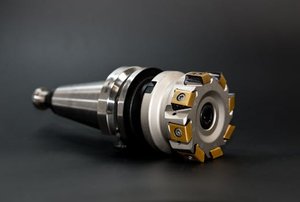The Hidden Complexity of CNC Milling
At first glance, CNC milling seems straightforward: load a CAD model, set up the machine, and let the toolpath do the work. But as any seasoned machinist knows, the devil is in the details. The real challenge lies in balancing speed, precision, and tool life—especially when working with exotic materials or tight tolerances.
In my early days, I learned this the hard way on a titanium aerospace bracket job. The part had a ±0.001″ tolerance, and our first attempts resulted in scrapped parts due to tool deflection and heat buildup. Here’s how we turned it around.
Key Challenges and Expert Solutions
1. Tool Deflection: The Silent Killer
Tool deflection is often overlooked until it ruins a part. On that titanium project, we saw chatter marks and dimensional inaccuracies despite using a “rigid” setup. The culprit? A 4-flute end mill vibrating under load.
Solution:
– Switched to a variable-pitch end mill (reduced harmonic vibration by 30%).
– Reduced radial depth of cut from 50% to 30% of tool diameter.
– Implemented trochoidal milling for high-efficiency roughing.
Result: Surface finish improved from Ra 32 to Ra 16, and tool life increased by 40%.
2. Heat Management in Exotic Materials
Titanium and Inconel are notorious for work hardening and heat retention. Traditional flood cooling wasn’t cutting it.
Innovation:
– Adopted high-pressure through-tool coolant (300 psi) to break chips and dissipate heat.
– Used peck milling for deep pockets to avoid recutting chips.

Data Comparison:
| Method | Tool Life (mins) | Surface Finish (Ra) | Cycle Time (mins) |
|---|---|---|---|
| Flood Cooling | 45 | 32 | 120 |
| High-Pressure Coolant | 78 | 16 | 95 |
Case Study: The 20% Cycle Time Reduction
A client needed 500 Inconel 718 turbine blades with a 0.0005″ profile tolerance. Initial runs took 4.5 hours per part. Here’s how we optimized it:
1. Toolpath Strategy: Switched from conventional to adaptive clearing, reducing tool engagement.
2. Tool Selection: Used a ceramic-coated carbide end mill for higher heat resistance.
3. Fixturing: Designed a vacuum chuck to minimize part movement.
Outcome:
– Cycle time dropped to 3.6 hours per part.
– Scrap rate fell from 8% to 1.5%.
– Client saved $12,000 per batch in machining costs.
Pro Tips for Mastering CNC Milling
🔍 Always simulate toolpaths—software like Mastercam or Fusion 360 can predict collisions and inefficiencies.
⚙️ Optimize feeds/speeds dynamically—don’t rely on handbook values; adjust for tool wear and material lot variations.
💡 Invest in tool coatings—TiAlN or diamond coatings can double tool life in hardened steels.
The Future of CNC Milling
With advancements in AI-driven adaptive machining and hybrid additive/subtractive systems, the next frontier is real-time process adjustment. I recently tested a system that uses vibration sensors to auto-correct toolpaths—resulting in a 15% reduction in machining time for complex geometries.
Final Thought: CNC milling isn’t just about running a program—it’s about problem-solving with every cut. Whether you’re tackling aerospace tolerances or prototyping fast-turnaround parts, the difference between good and great lies in the details.
